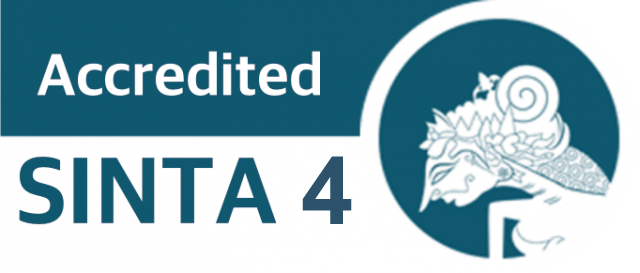Development of an E-Worksheet on Acid-Base Material with the Sorogan-Bandongan Learning Model to Train Students Attitude of Responsibility
DOI:
10.29303/jpm.v20i6.9577Published:
2025-09-20Issue:
Vol. 20 No. 6 (2025)Keywords:
Acid-Base; E-Worksheet; Responsibility; Sorogan-BandonganArticles
Downloads
How to Cite
Downloads
Metrics
Abstract
The Sorogan-Bandongan learning model is a traditional approach that is effective in training learners' responsibility through a series of learning activities, including reading and working on handouts, diagnostic tests, independent practice based on test results, reinforcement of concepts by the teacher, and self-reflection. This model emphasizes both individual (Sorogan) and collective (Bandongan) approaches, so that students are not only responsible for tasks they complete independently but also participate in collaborative discussion and evaluation processes. The purpose of this study is to describe the feasibility of the E-Worksheet on acid-base material using the Sorogan-Bandongan learning model to cultivate students' sense of responsibility. The feasibility of the E-Worksheet is assessed based on validity, practicality, and effectiveness. The method used in this study is Research and Development (R&D) with Thiagarajan's 4D development model, limited to the Develop stage. In this study, a limited pilot test was conducted in May 2025 with 20 high school students from SMA Negeri 19 Surabaya who had already studied acid-base material. Based on the results of the research conducted, it was found that the validity of the E-Worksheet was deemed valid based on the scores obtained from the validation sheet. The overall results of student activities from meeting 1 to meeting 3 showed an increase and obtained a percentage of ≥ 61%, indicating that the E-Worksheet on acid-base material is practical. The effectiveness of the E-Worksheet was assessed based on the increase in the observation sheet scores for students' sense of responsibility in each session. The n-gain results for students' sense of responsibility were categorized as high. Based on these results, it can be concluded that the E-Worksheet on acid-base material using the Sorogan-Bandongan learning model to cultivate students' sense of responsibility is suitable for use.
References
A. Emna, “Kedudukan motivasi siswa dalam pembelajaran,” Lantanida JOURNAL, 2017, doi: 10.22373/lj.v5i2.2838.
Rinaningsih, “Pengembangan Model Perkuliahan Sorogan-Bandongan dalam Kimia Organik dan Dampaknya Pada Penguasaan Konsep, Tanggung Jawab, Kemandirian, dan Keterbukaan,” perpustakaan.upi.edu, 2019.
G. S. Megahantara, “Pengaruh Teknologi terhadap Pendidikan Abad 21,” Universitas Negeri Yogyakarta, 2017.
A. Afridhonal dan E. Effendi, “Pengembangan Bahan Ajar Elektronik LKPD yang Terintegrasi STEM-PJBL pada Materi Termokimia di SMA 1 Gunung Talang,” Entalpi Pendidikan Kimia, 2021, doi: 10.24036/epk.v0i0.136.
R. Diani dan N. S. Hartati, “Flipbook berbasis literasi Islam: Pengembangan media pembelajaran fisika dengan 3D pageflip professional,” 2018, doi: 10.21831/jipi.v4i2.20819.
F. Wulandari dan R. Rinaningsih, “Implementasi Model Sorogan-Bandongan untuk Meningkatkan Hasil Belajar Peserta Didik Pada Materi Asam-Basa,” Jurnal Pijar MIPA, 2023, doi: 10.29303/cep.v6i1.3583.
W. Wirayanti, E. Erna, C. Cherawati dan K. Khaerani, “Metode Pendidikan Tradisional Pesantren dalam Membina Akhlak Santri (Studi Pesantren Nahdlatul Ulum Kabupaten Maros),” Socius: Jurnal Penelitian Ilmu-Ilmu Sosial, 2024, doi: 10.5281/zenodo.13896925.
A. Yulita , E. Sukmawati dan K. Kamaruzzaman, “Upaya Meningkatkan Sikap Tanggung Jawab Belajar Melalui Konseling Kelompok Pada Siswa Sekolah Menengah Pertama Negeri 1 Subah,” BIKONS: Jurnal Bimbingan Konseling, 2021.
R. P. Wahyuni dan T. S. Wahyuni, “Pengembangan Lembar Kerja Peserta Didik Elektronik (E-Worksheet) Berbasis Problem Based Learning Berbantuan Website Wizer.Me Pada Materi Laju Reaksi,” 2025.
R. Rahayu, “Peningkatan Tanggug Jawab Siswa SD Mealaui Penilaian Produk Pada Pembelajaran Main Mapping,” Jurnala Konseling GUSJIGANG Vol. 2 No. 1, 2016,
doi: 505fe456d7c64d7ebf79fa915aabf593.
S. P. Sari dan J. E. Bermuli, “Pembentukan Karakter Tanggung Jawab Siswa pada Pembelajaran Daring Melalui Implementasi Pendidikan Karakter,” vol. VII, no. 5, 2021, doi: 10.33394/jk.v7i1.3150.
J. Topulu dan L. K. Sianipar, “Upaya Meningkatkan Sikap Tanggung Jawab Siswa Kelas X Ipa Pada Pembelajaran Fisika Dengan Menggunakan Penilaian Antar Teman,” vol. I, no. 2, 2023.
D. Pratiwi, F. S. P. Pribowo dan F. Setiawan, “Analisis Sikap Tanggung Jawab dalam Pelaksanaan Program Merdeka Belajar di Masa Pandemi COVID-19 Pada Siswa SD,” vol. VI, no. 1, 2021, doi: 10.22437/gentala.v6i1.12028.
S. Thiagarajan, Instructional Development for Training Teachers of Exceptional Children: A Sourcebook, Bloomington: Indiana University, 1974.
Riduwan, Dasar-Dasar Statistika, Bandung: Alfabeta, 2020.
Sudjana, Metode Statistika, Bandung: Tarsito, 2005.
R. R. Hake, “Interactive-engagement versus traditional methods: A six-thousand-student survey of mechanics test data for introductory physics courses,” 1998, doi: 10.1119/1.18809.
N. Nieveen, Design Approaches and Tools in Education and Training, Netherlands: Kluwer Academic Publishers, 1999, doi: 10.1007/978-94-011-4255-7.
B. Prasetyo dan M. Lestari, “The Role of Digital Learning Media in Enhancing Students’ Independence and Responsibility Attitudes,” Interactive Learning Environments, 2023.
T. Wulandari dan H. Nugroho, “Development of Electronic Student Worksheet (E-Worksheet ) to Improve Concept Mastery and Responsibility in Chemistry Learning,” Journal of Science Education and Technology, 2021.
D. Sari dan A. Putra, “The Effect of E-Learning Media on Students’ Learning Outcomes and Responsibility Attitude,” Journal of Educational Technology, 2022.
C. I. Asriani,, N. Hidayati dan S. Suparmi, “Lingkungan Sosial dalam Mendorong Motivasi Belajar Siswa,” 2025.
L. R. Saputri, M. A. Rokhimawan dan S. Rahmawan, “Analisis Lembar Kerja Peserta Didik (Lkpd) Teori Atom Berbasis Inkuiri Terstruktur Siswa Sma N 1 Prambanan Sleman,” Dalton: Jurnal Pendidikan Kimia dan Ilmu Kimia, 2023, doi: 10.31602/dl.v6i3.11647.
L. Hanum dan R. Amini, “Pengembangan E-Worksheet Berbasis Problem Based Learning Menggunakan Aplikasi Book Creator di Kelas III Sekolah Dasar,” Jurnal Elementaria Edukasia, 2023, doi: 10.31949/jee.v6i4.7963.
S. K. Amartyah and R. Rusmini, “Development of student worksheets with contextual teaching and learning (CTL) approach to train critical thinking skills responsibility of students on thermochemistry concepts,” Jurnal Pijar Mipa, vol. 17, no. 3, pp. 276–284, 2022, doi: 10.29303/jpm.v17i3.3452
Author Biographies
Kholifatul Naimah, Chemistry Education Study Program, Faculty of Mathematics and Natural Sciences, Universitas Negeri Surabaya
Rinaningsih Rinaningsih, Chemistry Education Study Program, Faculty of Mathematics and Natural Sciences, Universitas Negeri Surabaya
License
Copyright (c) 2025 Kholifatul Naimah, Rinaningsih Rinaningsih

This work is licensed under a Creative Commons Attribution 4.0 International License.
The following terms apply to authors who publish in this journal:
1. Authors retain copyright and grant the journal first publication rights, with the work simultaneously licensed under a Creative Commons Attribution License 4.0 International License (CC-BY License) that allows others to share the work with an acknowledgment of the work's authorship and first publication in this journal.
2. Authors may enter into separate, additional contractual arrangements for the non-exclusive distribution of the journal's published version of the work (e.g., posting it to an institutional repository or publishing it in a book), acknowledging its initial publication in this journal.
3. Before and during the submission process, authors are permitted and encouraged to post their work online (e.g., in institutional repositories or on their website), as this can lead to productive exchanges as well as earlier and greater citation of published work (See The Effect of Open Access).











